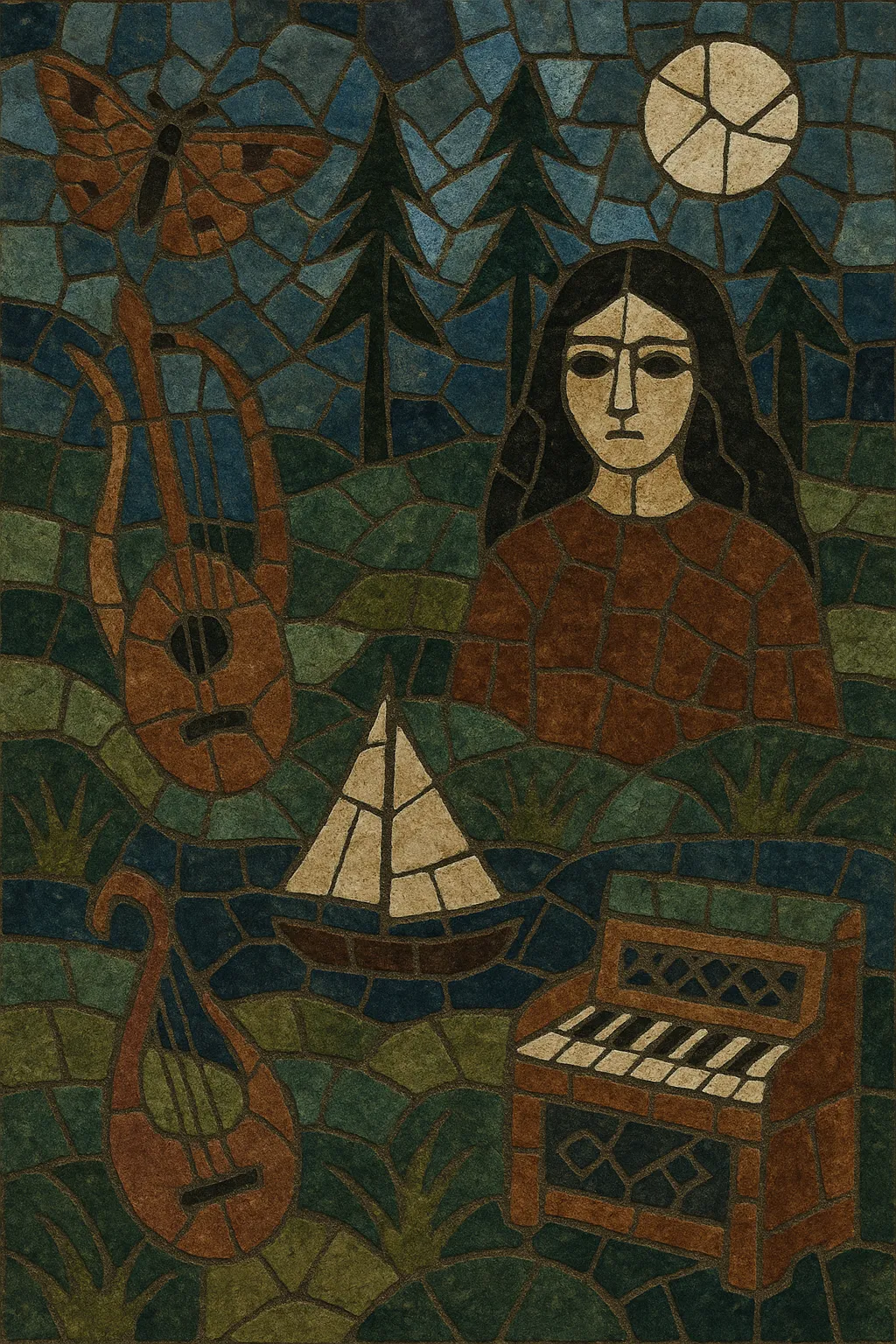New Weird Finland is a mid‑2000s Finnish underground movement that blends psychedelic folk, free improvisation, noise, and DIY cassette culture into a dreamlike, homespun sound. It often favors lo‑fi recording, long drones, and hand‑played textures, evoking forests, lakes, and folkloric mysticism.
Built around small labels and communal collectives, the scene connects ancient and homemade instruments (kantele, jouhikko, harmonium, toy keyboards) with tape loops, field recordings, and fuzzed electronics. The result ranges from hushed, intimate songs to ecstatic, swirling group rites—equally indebted to Nordic folk memory and boundary‑pushing experimentalism.
Although related to the broader “New Weird” renaissance, the Finnish branch has a distinct, wintry character: modal melodies, chantlike phrasing, clattering percussion, and painterly collage techniques that turn hiss, hum, and environmental sound into compositional material.
The term “New Weird Finland” emerged in the 2000s to describe a cluster of Finnish artists who reimagined folk and psychedelic traditions through a DIY, experimental lens. While loosely aligned with the contemporaneous New Weird America movement, the Finnish scene evolved with its own regional identity, leaning into Nordic folk modalities, austere landscapes, and a strong cassette/collective subculture.
Independent labels—most notably Fonal Records (founded by Sami Sänpäkkilä/Es)—became hubs for this sound, pressing small‑run LPs and tapes that celebrated lo‑fi tactility and handmade artwork. Collectives such as Avarus spurred a communal, improvisational approach: rotating lineups, house shows, and longform jams that blurred song, ritual, and noise. Artists folded in kantele and jouhikko with harmonium, toy instruments, and electronics, creating droning ecstasies, naïf melodism, and spectral collages.
By the mid‑late 2000s, international experimental and indie audiences took notice through boutique distributors, festivals, and tastemaking outlets. Cross‑border collaborations and split releases connected the Finnish scene to European psych, free folk, and noise networks, without diluting its distinct, off‑grid character.
Into the 2010s and beyond, the scene’s ethos—DIY fidelity, communal improvisation, and nature‑haunted psychedelia—continued to inform ambient folk, lo‑fi indie, and global “wyrd” folk currents. Even as artists diversified, New Weird Finland’s core signatures—tape warmth, drone centricity, and folkloric undertow—remain a recognizable imprint.


